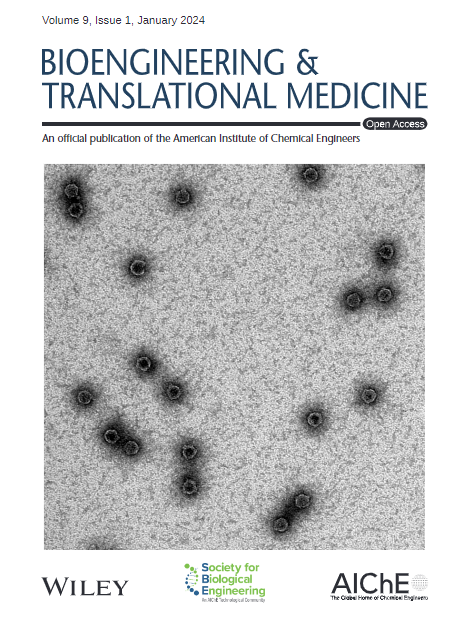胶质瘤化疗耐药与膜电生理特性和糖基化有关
IF 5.7
2区 医学
Q1 ENGINEERING, BIOMEDICAL
引用次数: 0
摘要
弥漫性胶质瘤是脑肿瘤,包括少突胶质细胞瘤、星形细胞瘤和胶质母细胞瘤(GBM),是最常见和致命的原发性脑肿瘤。胶质瘤治疗的一个主要挑战是对一线化疗药物替莫唑胺(TMZ)的耐药性。尽管细胞膜是细胞与环境的第一个接触点,并极大地塑造了细胞的行为,但对化疗耐药性增加的细胞的质膜特性还不是很清楚。质膜糖基化影响细胞功能,我们发现TMZ耐药细胞的糖基化有显著差异。我们进一步确定了预测胶质瘤细胞TMZ抗性的质膜电生理特性。我们根据脑胶质瘤细胞的电生理特性对其进行分类,从而富集具有较高TMZ耐药的细胞,这表明膜特性与化疗耐药的相关性。这些发现可能会导致患者肿瘤细胞的快速分离方法,更好地了解耐药细胞的分子特征,以及胶质瘤的新治疗选择。本文章由计算机程序翻译,如有差异,请以英文原文为准。
Glioma chemotherapeutic resistance is tied to membrane electrophysiological properties and glycosylation
Diffuse gliomas are brain tumors that include oligodendroglioma, astrocytoma, and glioblastoma (GBM), the most common and deadly primary brain tumor. A major challenge in glioma treatment is resistance to the first‐line chemotherapeutic, temozolomide (TMZ). Plasma membrane properties of cells with increased chemotherapeutic resistance are not well understood, despite the fact that the membrane is the first point of contact with the environment and greatly shapes cell behavior. Plasma membrane glycosylation impacts cell function, and we found significant differences in glycosylation of TMZ‐resistant cells. We further identified plasma membrane electrophysiological properties predicting glioma cell TMZ resistance. We enriched cells with higher TMZ resistance by sorting glioma cells based on electrophysiological properties, indicating the relevance of membrane properties to chemotherapeutic resistance. These findings could lead to rapid separation methods for patient tumor cells, a better understanding of the molecular profiles of resistant cells, and novel treatment options for gliomas.
求助全文
通过发布文献求助,成功后即可免费获取论文全文。
去求助
来源期刊

Bioengineering & Translational Medicine
Pharmacology, Toxicology and Pharmaceutics-Pharmaceutical Science
CiteScore
8.40
自引率
4.10%
发文量
150
审稿时长
12 weeks
期刊介绍:
Bioengineering & Translational Medicine, an official, peer-reviewed online open-access journal of the American Institute of Chemical Engineers (AIChE) and the Society for Biological Engineering (SBE), focuses on how chemical and biological engineering approaches drive innovative technologies and solutions that impact clinical practice and commercial healthcare products.
 求助内容:
求助内容: 应助结果提醒方式:
应助结果提醒方式:


